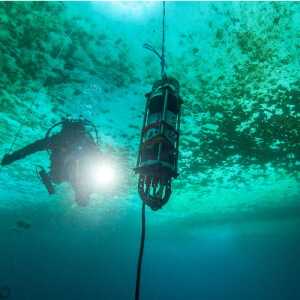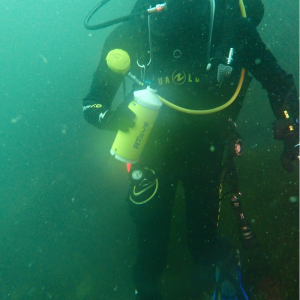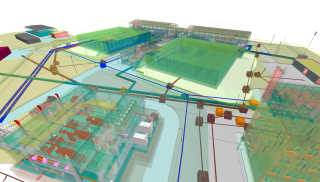

“Posidonia meadows calling”: a ubiquitous fish sound with monitoring potential
In the Mediterranean Sea, the seagrass Posidonia oceanica plays a key ecological role, and is protected by a range of legislation. Standard Posidonia monitoring programms generally focus on the plant at different spatial and short temporal scales, without considering the organisms dependent on the ecosystem.Passive acoustic monitoring (PAM) has a high potential to non-intrusively monitor biological activities and biodiversity at high temporal resolution, and to assess ecosystem health. This is particularly relevant considering that Posidonia meadows host numerous sound-producing fish species. In this study, bottom-moored hydrophones were deployed in nine Western Mediterranean meadows covering a distance of more than 200 km to identify acoustic features potentially relevant to monitor this critical habitat. Among eight identified fish sound categories, we found a single type of sound (that we will refer to as /kwa/) dominating the soundscape of Posidonia meadows over a time span of 7 months. Compared to other low-frequency sounds, the /kwa/ presented unique characteristics that suggest it is produced by a fish via fast contracting muscles. The /kwa/ was the only sound detectable under anthropogenic noise conditions, and little affected by it. Cluster analyses performed on 13 acoustic features revealed a high degree of call diversity. /Kwa/ diversity, combined with its large-scale (all meadows), long-term (7 months) occurrence and low noise interference, make the /kwa/ a promising candidate for PAM of Posidonia meadows. Furthermore, variability in acoustic features suggests a central role of the /kwa/ in communication. Overall, this work sets the basis for establishing the relevance of the /kwa/ in monitoring P. oceanica meadows and developing PAM techniques for this critical habitat.
In the Mediterranean Sea, the seagrass Posidonia oceanica plays a key ecological role, and is protected by a range of legislation. Standard Posidonia monitoring programms generally focus on the plant at different spatial and short temporal scales, without considering the organisms dependent on the ecosystem. Passive acoustic monitoring (PAM) has a high potential to non-intrusively monitor biological activities and biodiversity at high temporal resolution, and to assess ecosystem health. This is particularly relevant considering that Posidonia meadows host numerous sound-producing fish species. In this study, bottom-moored hydrophones were deployed in nine Western Mediterranean meadows covering a distance of more than 200 km to identify acoustic features potentially relevant to monitor this critical habitat. Among eight identified fish sound categories, we found a single type of sound (that we will refer to as /kwa/) dominating the soundscape of Posidonia meadows over a time span of 7 months. Compared to other low-frequency sounds, the /kwa/ presented unique
characteristics that suggest it is produced by a fish via fast contracting muscles.
The /kwa/ was the only sound detectable under anthropogenic noise conditions, and little affected by it. Cluster analyses performed on 13 acoustic features revealed a high degree of call diversity. /Kwa/ diversity, combined with its large-scale (all meadows), long-term (7 months) occurrence and low noise interference, make the /kwa/ a promising candidate for PAM of Posidonia
meadows. Furthermore, variability in acoustic features suggests a central role of the /kwa/ in communication. Overall, this work sets the basis for establishing the relevance of the /kwa/ in monitoring P. oceanica meadows and developing
PAM techniques for this critical habitat.
Do you have questions about this case study?
Get in touch with RTsys, and they would be happy to answer any questions you have about pricing, suitability, availability, specs, etc.









